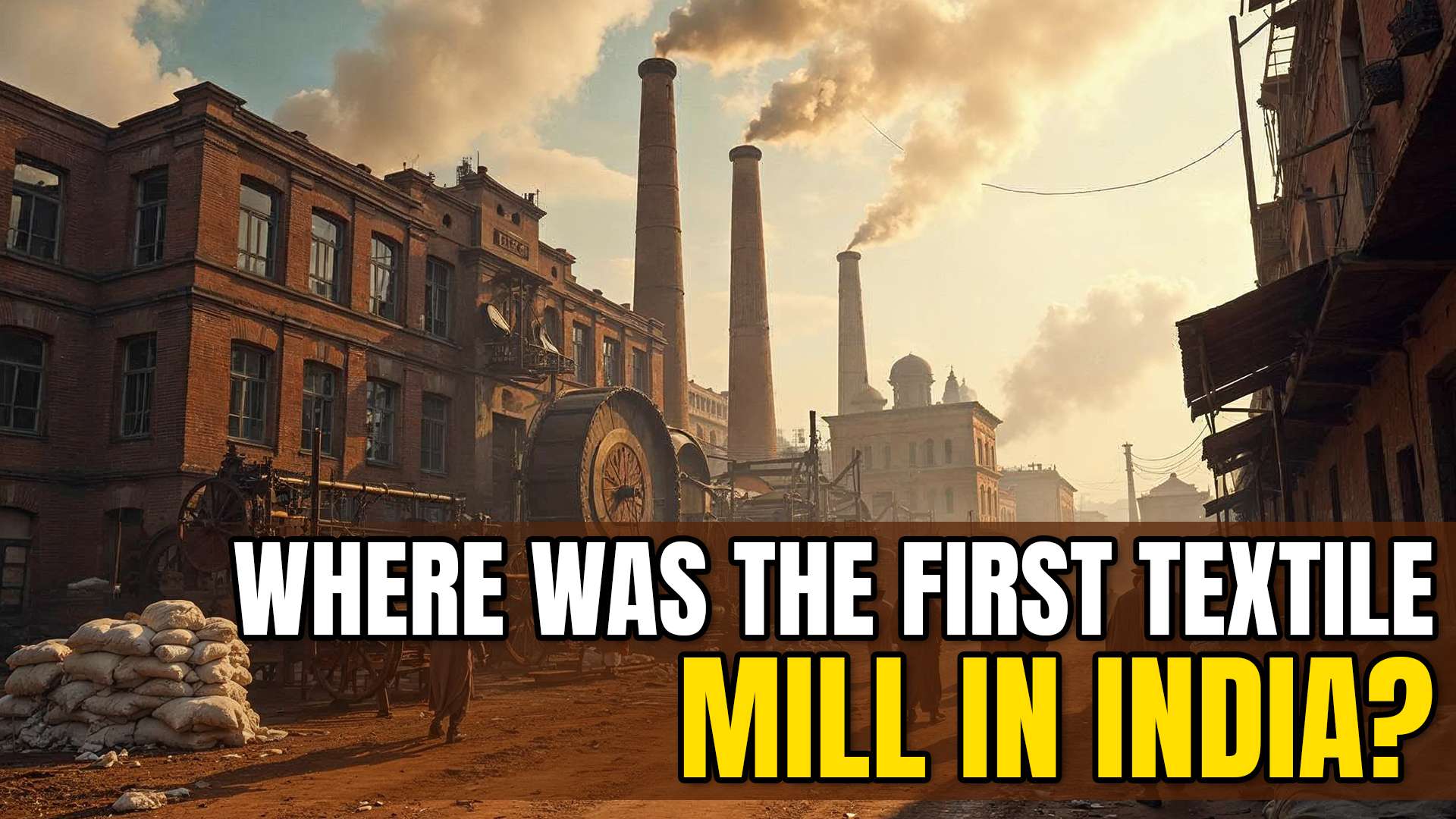Where Was The First Textile Mill In India Established ?

Share Blog:
The history of textile manufacturing in India is rich and multifaceted, marked by significant milestones that reflect the evolution of the industry from traditional handloom practices to mechanized production. Among these milestones, the establishment of the first textile mill holds a prominent place.
The First Cotton Textile Mill
The first cotton textile mill in India was established at Fort Gloster, near Kolkata, in 1818. This mill was a pioneering effort in mechanized textile production but faced significant challenges and ultimately proved to be a commercial failure due to a shortage of raw materials and inadequate infrastructure. Despite its closure shortly after opening, this venture marked the beginning of India's journey into industrial textile manufacturing.

Context and Challenges
The establishment of the Fort Gloster mill occurred during a period when India was still largely agrarian, with traditional hand loom weaving dominating the textile sector. The introduction of mechanization was influenced by the Industrial Revolution taking place in Britain, which had transformed textile production through innovations such as the power loom. However, the nascent Indian textile industry struggled with several obstacles:
-
Raw Material Shortages: The mill could not secure a consistent supply of cotton, which hampered its operations.
-
Lack of Infrastructure: The necessary infrastructure for supporting large-scale industrial operations was still underdeveloped in India at that time.
-
Market Conditions: The competition from established British textile manufacturers also posed a significant challenge.
Subsequent Developments
Following the failure of Fort Gloster, it wasn't until 1854 that India saw its first successful cotton textile mill, the Bombay Spinning and Weaving Company, established in Mumbai (then Bombay) by Cowaszee Nanabhoy Davar. This mill marked a turning point in India's textile industry:
- Location: Mumbai was strategically located with access to ports for importing machinery and exporting textiles.
- Supportive Environment: The region benefited from a favorable climate for cotton production and a growing market for textiles.
The Bombay Spinning and Weaving Company began production on February 7, 1856, under British supervision and quickly became a model for future mills across India. This success led to rapid industrial growth in Mumbai, establishing it as a hub for textile manufacturing and earning it the nickname "Manchester of India."

For Franchisee Inquiry, Call: +9163521 77288
Surat: The Modern Hub of Textiles
While Mumbai played a pivotal role in the early growth of India's textile industry, Surat has emerged as a powerhouse in modern times. Known as the "Textile City of India", Surat is the largest producer of synthetic textiles and a major center for sarees and dress materials. The city is home to Ajmera Fashion, a leading textile manufacturer that embodies the spirit of innovation and excellence. Ajmera Fashion's extensive range of sarees, suits, and dress materials has established it as a trusted name in the industry, catering to domestic and international markets.
Surat’s vibrant textile industry, powered by cutting-edge technology and a skilled workforce, continues to honor India’s rich textile heritage while driving the sector forward. Companies like Ajmera Fashion contribute to this growth by combining traditional craftsmanship with modern production techniques, ensuring that Indian textiles remain competitive in a global marketplace.

For Wholesale Inquiry, Call: +916358907210
Also read: Why is Clothing Franchise Business Popular In India.
Conclusion
The establishment of the first textile mill at Fort Gloster in 1818 is a crucial chapter in India's industrial history. While it did not succeed commercially, it laid the groundwork for subsequent developments in the textile sector. The eventual success of mills like the Bombay Spinning and Weaving Company demonstrated the potential for mechanized production in India, leading to significant advancements in the industry throughout the late 19th century.
Today, the Indian textile industry is one of the largest globally, with Surat playing a central role. Companies like Ajmera Fashion not only preserve India’s rich textile legacy but also drive innovation, making Indian textiles a symbol of quality and tradition worldwide.

For Wholesale Inquiry, Call: +9163589 07210
Also, Read…





